Affiliate disclosure: This post may contain affiliate links. Please see our Privacy Policy.
Northern Wild Raisin (Viburnum nudum) is a native food plant all along the Eastern United States. The plants thrive in wet shady areas as an understory shrub, and it’s a common food for wild birds.
The berries are also edible for humans, and with plants bearing heavy annual crops, Wild Raisin is a good choice for permaculture plantings in shady areas beneath larger trees.
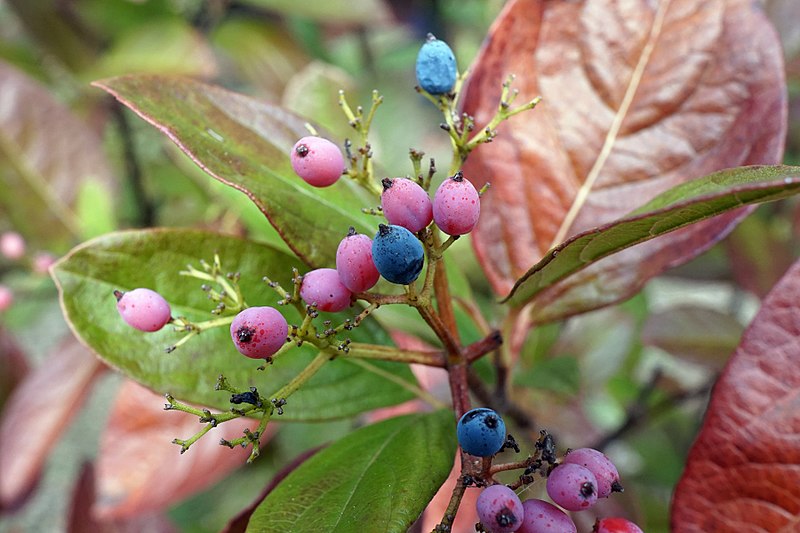
Other Names for Viburnum nudum
Most commonly known as Viburnum nudum, Northern Wild Raisin actually goes by a number of latin names including:
- Viburnum nudum var. cassinoides
- Viburnum nitidum
- Viburnum cassinoides
- Viburnum cassinoides var. harbisonii
- Viburnum cassinoides var. nitidum
- Viburnum nitidum
To add to the confusion, the same plant also goes by a number of common names besides Northern Wild Raisin including:
- Appalachian Tea – The root bark was used medicinally by native American tribes, thus the name. This is also the common name of a number of other unrelated plants as well.
- Raisinberry – Coming from the shriveled raisin-like appearance of the ripe berries.
- Witherod, withe-rod, witherod – Old English meaning a flexible twig used to bind things together, the stems were used as a type of cordage historically.
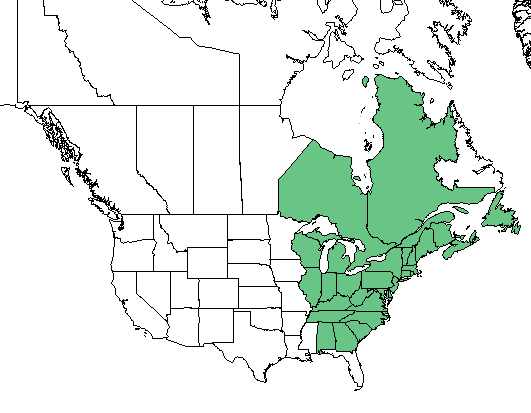
How to Grow Northern Wild Raisin
Regardless of what you call it, Viburnum nudum is a beautiful carefree landscape plant that produces showy white flower clusters in late spring to early summer, followed by edible berries in the fall. Hardy from zone 3 to 8, it’s an adaptable plant that tolerates shade, wet soils and road salt.
Though it thrives in wet understory conditions with part to full shade, it will survive in full sun provided there’s enough soil moisture. Since it’s salt tolerant, it’s commonly used to prevent erosion along roadside ditches, and it can also be used in seaside plantings.
Wild raisin plants are generally multi-stemmed bushes that can grow to 6′ tall by 6′ wide, though they’re often smaller.
Identifying Viburnum nudum
Since northern wild raisin is native to the entire east coast, it’s possible you already have it growing on your land. It grows readily from seed, so if you can identify a specimen then you can come back in the fall to harvest the berries. I’ve also read that it can be propagated from both hardwood and softwood cuttings.
Here’s a closeup of the flower clusters:
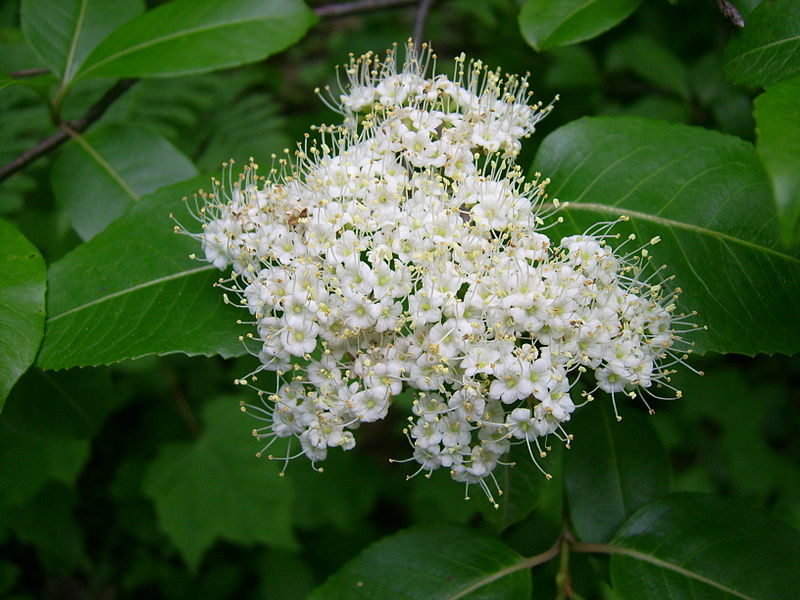
Identifying Viburnum nudum by the leaves is a bit trickier, as they’re quite variable from plant to plant.
Some leaves are serrated, others not. Here are the leaves on one specimen, but be aware that they may not match yours.
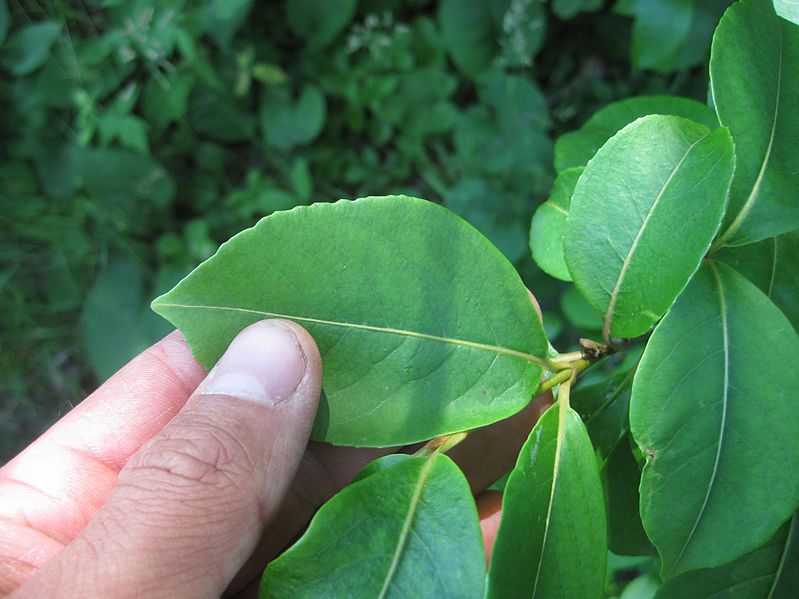
Other Unique Permaculture Plants
Looking for more unique plants to add to your permaculture food forest? Try any of these:
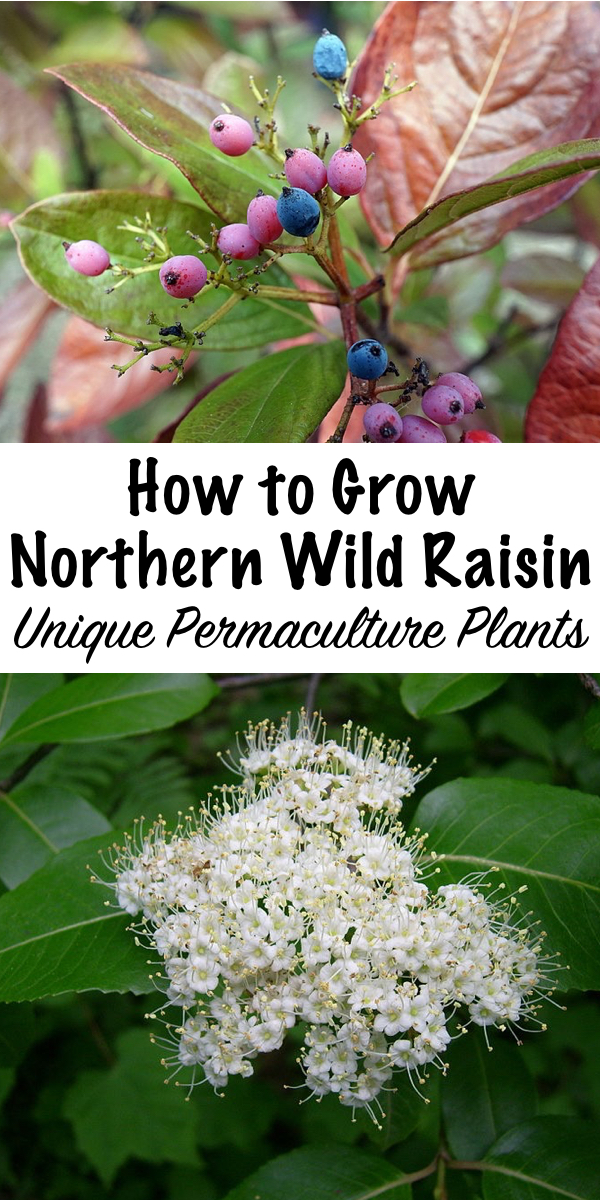
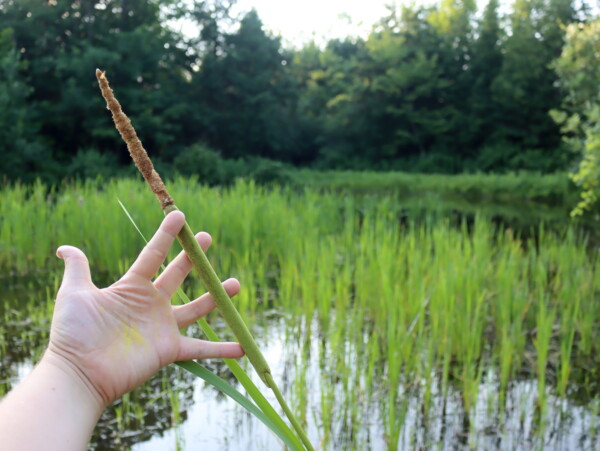
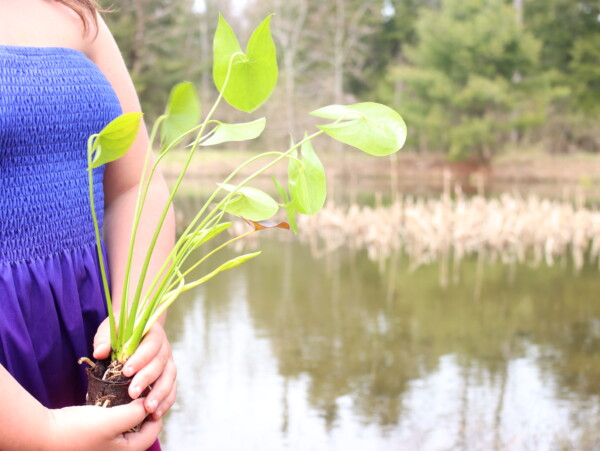
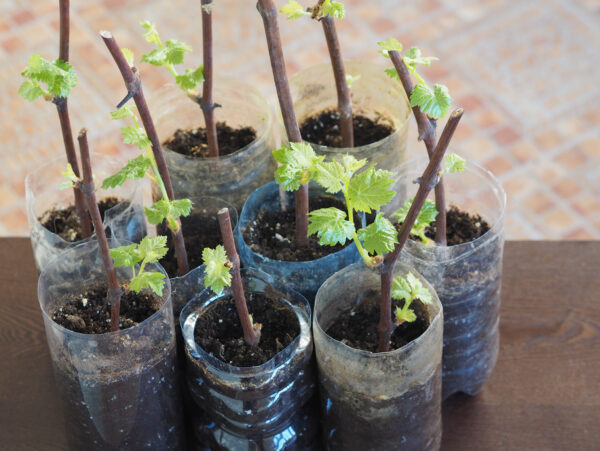
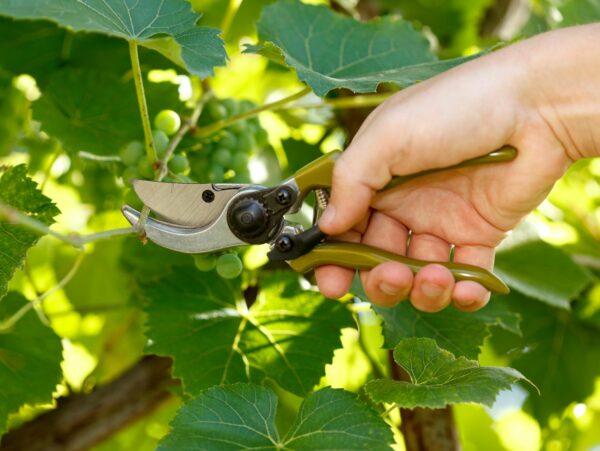
Hello,
A native guy for 15 years. I planted a cornus mas but didn’t know about the fruit. Thanks for your information. i am learning a lot. Where can i get the true Northern Wild Raisin plants?
Thanks, Also trying to make salve from Cottonwood buds.
Glen
Wonderful, all sounds like a lot of fun, and cottonwood salve smells amazing. You can get northern wild raisin from fedco (https://fedcoseeds.com/trees/). Good luck with it!
I love Cornelian Cherries. They grow in Crocheron Park in Bayside, New York, and they make the most wonderful cherry jam you could ever try. Every year when they are ripe, Eastern Europeans descend on the park to collect them (which, by the way, is quite legal) I have collected them and they are wonderful.
I so love cornelian cherries too!